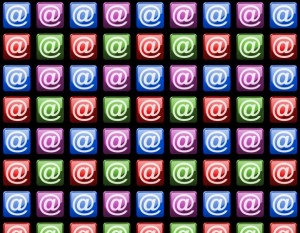
For most of us something like a “rule of 10” applies: for every 10 messages in our inbox there may be one with some relevance to our lives.
Nearly everyone is overwhelmed with too many emails. Those that work in large organizations are especially likely to face the same daily high tide that rushes in at a rate of one or two every few minutes. So this requires a daily routine that includes clearing out our inbox, which means getting rid of a lot ‘fishing’ emails from outside groups, not to mention missives from fellow workers who use the “send to all” button as an easy claim to institutional relevancy.
The simple problem is that the system feeds on itself. The more emails we answer the more we get. And for most of us something like a “rule of 10” applies: for every 10 messages there is one that may have some relevance to our lives. Sometimes the ratio seems more like 100 to 1. The bigger problem is that email is usually a distraction that keeps us from doing more useful things.
How can we deal with this sponge on our time? The strategies vary, none of them perfect. Oliver Burkeman in The Guardian recommends a solution tried by Tony Hsieh, the President of Zappos.
He calls it “Yesterbox,” because the premise is that you should stop focusing on email received today, except when urgent, and instead try to deal with everything that came in yesterday. It’s an idea so simple, your first response might legitimately be, “Huh? What difference could that make?” A big one, it turns out.
The logic is that a “closed list” of yesterday’s emails is easier to get through. Burkeman notes that “in your Yesterbox, you’re no longer on a treadmill: one email dealt with means one fewer to deal with; the target you’re aiming for isn’t receding constantly into the distance.” That may be true, but it’s small comfort and a minor psychological advantage gained over working from the most recent to the oldest.
Here are some additional suggestions that can result in spending less time each day on stuffed in-boxes, even within an organization that treats email as the “official” channel of communication.
- Turn off the audio email notifications on your computer. They feed our curiosity and can break the rhythm of more significant work.
- Check email only once or twice a day. Give it the lower priority it usually deserves.
- Save email for the low part of your daily productivity curve. If you are the most creative and energetic in the morning, don’t waste your time on it then. The tedium of going through it can probably wait until that after-lunch miasma kicks in.
- Don’t substitute texting for email. The norm of instant response for texts can be a major time-killer, intensifying the problem you are trying to solve.
- Spend more time in “airplane mode,” even when you are on the ground. Our addiction to screens is real and growing. In order to tame it, set aside sizable segments of the day when you are more available in real space more than virtual space. Anyway, you look smarter when not seen by friends and coworkers frozen into a “screen thrall,” which looks only slightly better than drooling in public.
- Like most most forms of communication, emails from co-workers usually have an expressive purpose that outweighs the need to respond. For these a simple acknowledgment is enough.
- Some groups are serial offenders in over-sending messages. Attempts to unsubscribe or block them will probably not work. Learn to be fast with the delete key for these groups. And if you do reach a live body at the organization, express your displeasure with their abuse of your inbox.
Now, if I can just get with the program myself. . .


